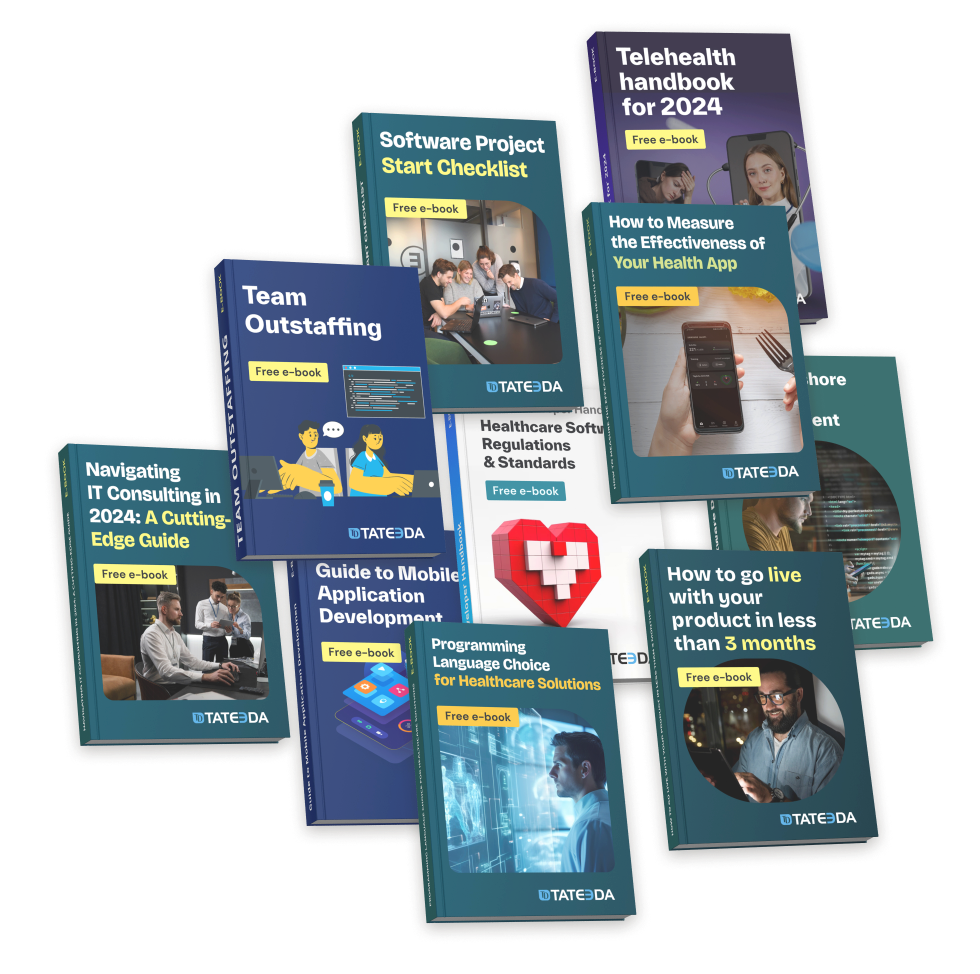IT Staff Augmentation vs. Outsourcing: How to Choose the Best Model?

This article explores the crucial challenges of choosing between IT staff augmentation and outsourcing models and understanding the difference between IT staff augmentation vs. outsourcing, providing small businesses with strategic insights to effectively navigate their IT needs.
With over 33 million small businesses making up 99.9% of all U.S. companies, these organizations frequently grapple with managing substantial IT projects without extensive IT departments or deep tech expertise.
According to the U.S. Small Business Administration, 647,921 of these businesses employ between 20 to 499 workers, highlighting their efforts to achieve business goals with limited staffing.
This situation underscores the importance of comparing IT staff augmentation vs. outsourcing strategies to make informed strategic decisions.
? These models allow small businesses to scale their IT capabilities dynamically, enabling them to quickly extend their technical expertise and assemble or disassemble project-based teams as needed—without higher costs associated with permanent workforce expansions.
IT Staff Augmentation vs. IT Outsourcing: Reasons Behind Making This Choice
One of the key reasons businesses consider IT staff augmentation vs. outsourcing comparison is the need for scaling throughout the lifespans of their projects, which often follows a non-linear trajectory.
? ? Scaling involves both growth and occasional setbacks, primarily due to hiring and retention fluctuations. As some team members complete their roles and depart, new ones join, adapting to the evolving needs of the project.
Moreover, different phases of development require varying team sizes; more specialists are needed during peak development, while fewer are required as the project shifts to maintenance.
Consequently, the scaling process often appears dynamic and variable, as illustrated by this graph:
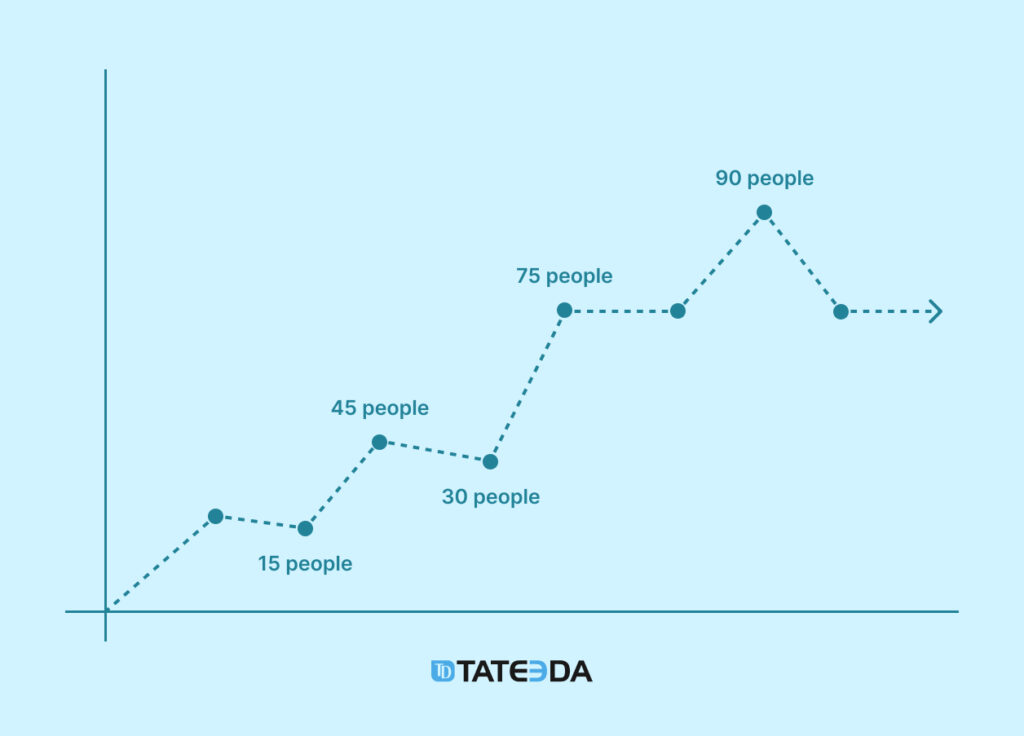
Another important reason for companies to understand the difference between outsourcing and IT staff augmentation is to acquire technological innovations, such as new software systems, and extend their business functions in technical fields like migrating databases to the cloud.
If a company implements efficient IT-driven business processes, they will need dedicated IT specialists. Choosing the right IT outsourcing strategy can help maintain the entire system without the expense of full-time in-house employment.
Let’s take a closer look at the IT staff augmentation and IT outsourcing models to identify their major features and practical use scenarios…
Augment Your Staff with Our Skilled R&D Resources
TATEEDA offers over 10 years of superb service in the IT staff augmentation industry. Contact our team to select the most fitting scenario for your project.
Table of Contents
About IT Staff Augmentation: What It Is and When It’s Most Effective
IT staff augmentation is a flexible HR outsourcing strategy that allows companies to hire remote tech talent globally and manage an augmented team directly. This approach is typically used to scale project teams, add specific skill sets on a short-term basis, or accelerate project timelines.
Typical scenarios where staff augmentation is recommended:
- When a project requires specialized IT skills that are absent within the current team. For example, when they need to hire React.js developers to improve the code of their server-side operations or engage .NET software engineers for full-stack web app development.
- During peak periods of project activity where additional resources are needed temporarily. For example, when you need to add a software QA testing unit to ensure your product is robust and free of bugs or vulnerabilities.
- To avoid the cost and commitment associated with permanent hires in fluctuating project scopes.
Example: Real-world Application of Staff Augmentation
A software development company facing sudden client demand for blockchain expertise used staff augmentation to quickly secure skilled blockchain developers. This allowed the company to meet project deliverables while maintaining flexibility in its workforce.

About IT Outsourcing: What It Is and When It’s Most Effective
IT outsourcing services involve engaging external resources to manage entire projects or specific IT functions. This strategy is often adopted to reduce costs, improve efficiencies, or access technology and skills that are not available in-house.
Typical scenarios where outsourcing is beneficial:
- When IT is not a core function of the company and can be managed more effectively by an external provider. For example, a team may require the support of an expert DevOps service specialist who can assist them remotely on a part-time basis without constant engagement.
- In cases where cost reduction is a priority, outsourcing can provide access to lower-cost regions. This includes options such as nearshore software development; for the U.S., this covers Brazil, Argentina, Colombia, and other LATAM nations. It also encompasses offshore software outsourcing to remote locations not well-synchronized in time zones, like India or Eastern Europe including software dev outsourcing to Ukraine.
- Outsourcing can be highly beneficial for long-term projects that require a stable, committed team over an extended period. If a company has ongoing plans to develop their mobile apps or web-based projects, they may hire an offshore mobile development team or offshore custom web system development services. This approach allows them to achieve their goals without breaking the bank.
Example: Real-world Application of IT Outsourcing
A retail company outsourced its entire IT infrastructure management to a specialized IT service provider, allowing them to focus on core business operations like sales and customer service. This strategic move not only reduced operational costs by 30% but also enhanced their system reliability and customer satisfaction rates.

Key Benefits of IT Staff Augmentation
Staff augmentation offers unmatched flexibility, enabling companies to adjust their team sizes based on project demands swiftly.
- Direct Control and Transparency: This model provides direct oversight over the augmented staff, fostering transparency and enabling better integration with the company’s internal processes and culture.
- Cost Efficiency and Specialized Skillsets: It offers cost-effective access to specialized skills that might not be available in-house. For instance, 81% of executives leverage third-party vendors to provide cybersecurity capabilities, reflecting the high demand for specialized IT skills that staff augmentation can satisfy.
- Confidentiality and In-House Integration: Augmented staff work closely with existing teams, often using the company’s systems and following its security protocols, which ensures privacy and seamless integration.
Key Benefits of IT Outsourcing
- Cost Reduction and Budget-Friendly Models: Outsourcing remains a cost-effective solution, with 57% of executives identifying cost reduction as the primary driver. This model allows businesses to operate within tighter budgets while achieving quality outputs. This involves selecting a vendor based on the most suitable pricing model, such as choosing between fixed price and time & material options.
- Access to a Global Talent Pool and Specialized Skills: Companies can tap into a global talent pool, accessing a vast array of specialized skills often unavailable locally. This is especially critical as IT executives see talent shortages as a significant barrier to adopting emerging technologies.
- Enhanced Quality and Efficiency: Outsourcing firms specialize in IT services, offering high-quality results that can increase productivity, as evidenced by 57% of companies outsourcing to enhance productivity.
- Focus on Core Business Functions: It allows businesses to concentrate on their core functions by offloading IT tasks to experts, aligning with the strategies of 87% of organizations that incorporate external providers in their workforce planning.
Outsource Your IT Projects to Our Software Engineers
We provide a diversified pool of software developers, QA experts, and other IT specialists at competitive rates.
Comparative Analysis: Staff Augmentation vs. Outsourcing
Market Trends and Statistics:
- The outsourcing industry is booming, with its total industry revenue projected to reach $812.71 billion by 2029.
- Currently, 30% of U.S.-based companies outsource at least one function. Despite varying market conditions, this trend shows no sign of declining.
Cost and Talent Access:
- Staff augmentation offers a solution to the talent availability issues faced in IT, with 75% of IT automation technologies and 41% of digital workplace technologies citing talent scarcity as a risk.
- Outsourcing continues to be driven by cost concerns, with an average of 57% of executives seeking outsourcing solutions for cost reduction. In comparison, 96% of executives rely on service providers for developing data and analytics capabilities.
| Feature | Staff Augmentation | Outsourcing |
| Primary Benefit | Flexibility and direct control over work | Cost reduction and comprehensive service management |
| Cost Efficiency | High for short-term needs; variable based on demand | Generally lower due to economies of scale |
| Talent Access | Access to specific skill sets for short-term needs | Access to a broad range of skills and technologies |
| Project Management | Managed by the client | Managed by the vendor |
| Integration with Core Teams | Seamless, as staff work within client teams | Variable, depending on the management model |
| Best For | Projects needing specific skills temporarily | Long-term and comprehensive IT functions |
| Compliance & Security | Depends on the client’s protocols | Handled by the vendor, often with strong standards |
| Market Trends | Increasing use for dynamic project needs | Steady growth, essential for scaling operations |

Learn More: How Much Does It Cost to Hire an IT Staff Augmentation Service
Pros and Cons: A Detailed Look at the Difference between IT Staff Augmentation vs. IT Outsourcing
This segment explores the key strengths and weaknesses of IT staff augmentation and outsourcing, each presenting distinct benefits and encountering particular software outsourcing challenges. Gaining insight into these aspects can guide organizations in making well-informed choices that align with their operational requirements and strategic objectives.
IT Staff Augmentation Advantages:
✅ Flexibility: IT staff augmentation allows you to adjust your team size and skill sets quickly as project demands evolve, offering a cost-effective solution to meet varying project needs.
✅ Quick Onboarding: Rapid integration of skilled professionals helps accelerate project timelines, enabling you to kickstart projects immediately without the lengthy processes associated with hiring full-time staff.
✅ Greater Control: With direct oversight of augmented staff, you maintain greater control over the project, ensuring that all aspects align closely with your objectives.
IT Staff Augmentation Disadvantages:
❌ Potential Integration Challenges: Differences in work culture and processes may lead to integration issues.
❌ Dependency on External Talent: Reliance on external resources can be risky if not managed properly.
IT Outsourcing Advantages:
✅ Cost Savings: Potentially lower costs due to economies of scale and access to lower-cost regions.
✅ Access to Expertise: Outsourcing partners often have a broad spectrum of specialized skills and technology.
✅ Reduced Management Overhead: Vendors manage all aspects of the IT project, including coordination of resources, scheduling, quality assurance, and communication, which reduces your direct management time.
✅ Hassle-Free Hiring: The outsourcing company handles all aspects of employment, from recruitment to payroll, taxes, and benefits, providing assistance exactly when and how you need it.
IT Outsourcing Disadvantages:
❌ Less Direct Control: Outsourcing can result in reduced oversight of the day-to-day operations.
❌ Communication Issues: Time zone differences and language barriers can complicate project management.
❌ Risk of Increased Costs: A poorly defined project scope can result in significantly higher costs than anticipated, which might exceed those of an outstaffed project.
Decision-Making Guide: Choosing between IT staff augmentation vs. IT Outsourcing
This guide and comparison table help clarify the IT staff augmentation vs outsourcing comparison, providing strategic insights to aid in making an informed decision based on your specific business needs and project demands.
IT Staff Augmentation vs Outsourcing Comparison
| Factor | IT Staff Augmentation | IT Outsourcing |
| Project Requirements and Goals | Ideal for projects needing specific, high-level expertise for short durations or immediate resource needs. | Best suited for comprehensive, long-term projects that require a broad range of services. |
| Budget Constraints and Cost Analysis | Preferable when needing to control costs closely for short-term projects without long-term commitments. | More cost-effective for long-term projects due to economies of scale and lower operational costs. |
| Desired Level of Control and Oversight | Chosen when maintaining close control over the project and team is essential. Allows direct management of staff. | Used when some loss of control is acceptable in exchange for reduced management overhead. |
| Long-term vs. Short-term Needs | Selected for short-term needs or specific tasks where quick scalability is a priority. | Optimal for ongoing, continuous needs where stable, long-term support is beneficial. |
Practical Scenarios and Case Studies

Case Study 1: Successful IT Staff Augmentation
Travel Nurse Healthcare, a leading health-tech platform in the United States, has over 15 years of industry experience. Specializing in medical on-demand staffing and nurse management solutions, they required enhanced software capabilities to manage their extensive nurse assignment base effectively.
Challenges:
The primary challenge was enhancing the functionality and user experience of their software across multiple platforms, including financial reporting, time tracking, and a portal for medical workers, without disrupting their ongoing operations.
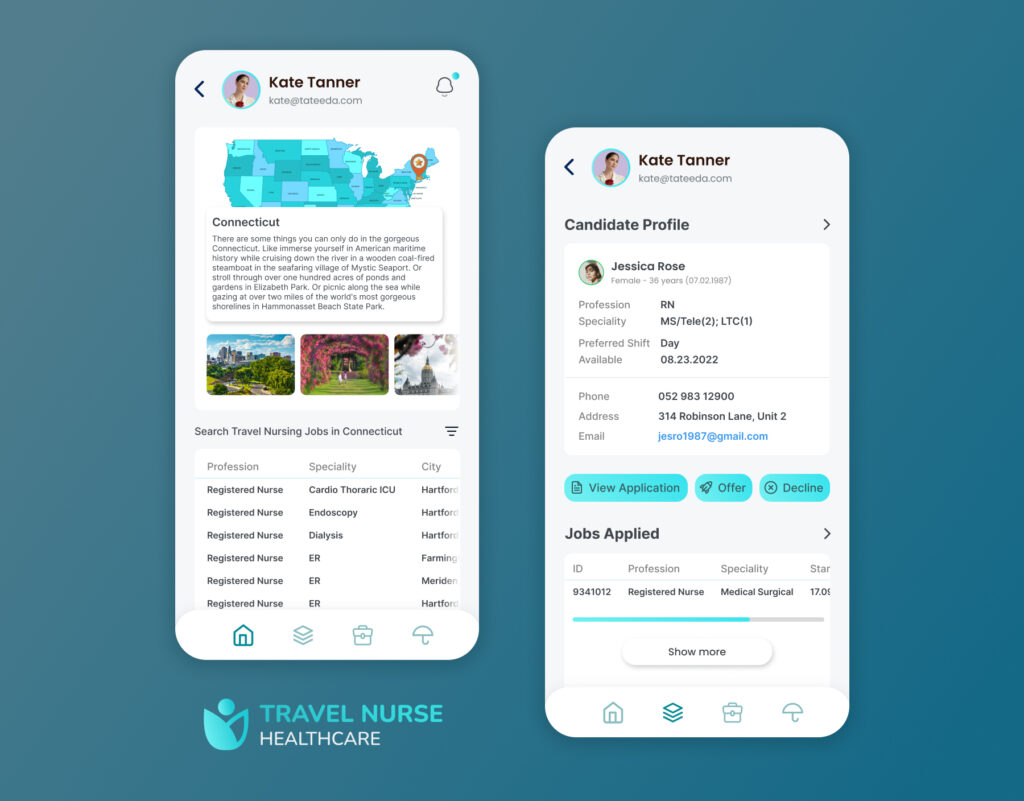
Solution and Outcomes:
Travel Nurse Healthcare engaged TATEEDA through a staff augmentation model, integrating over 60 specialists including front-end developers, mobile developers, and QA engineers into their teams. This collaboration led to the development of four critical software modules and three distinct mobile apps tailored for different user groups, significantly improving operational efficiency and user engagement.
Case Study 2: Successful IT Outsourcing
VROM Automation, a company specializing in trading electronic components for IoT networks and industrial automation, needed to modernize their warehouse management system from an outdated in-office setup to a flexible web-based platform.
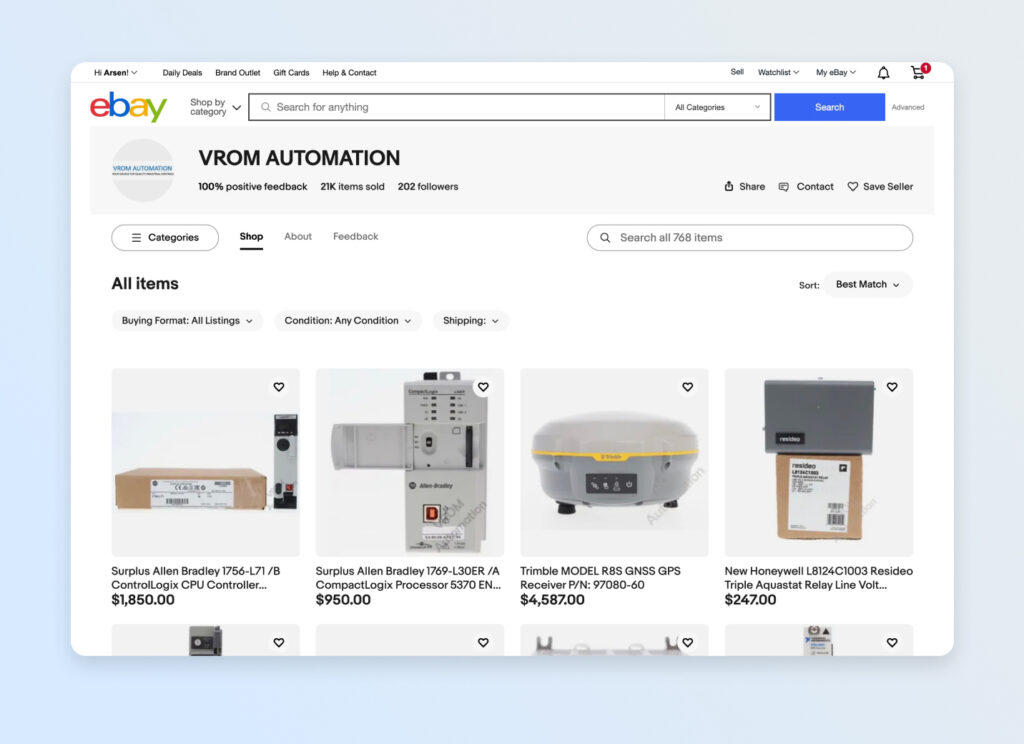
Challenges:
The main challenge was replacing the outdated system with a new solution that could integrate seamlessly with eBay to enhance inventory data flow processes and improve overall warehouse management.
Solution and Outcomes:
VROM Automation outsourced the entire project to TATEEDA | GLOBAL, which developed a custom web-based warehouse management platform with integrated eBay functionality. The solution delivered by TATEEDA’s team, including UI designers, .NET, Angular web developers, and QA engineers, enabled VROM Automation to achieve enhanced transparency and efficiency in handling new arrivals and product sales.
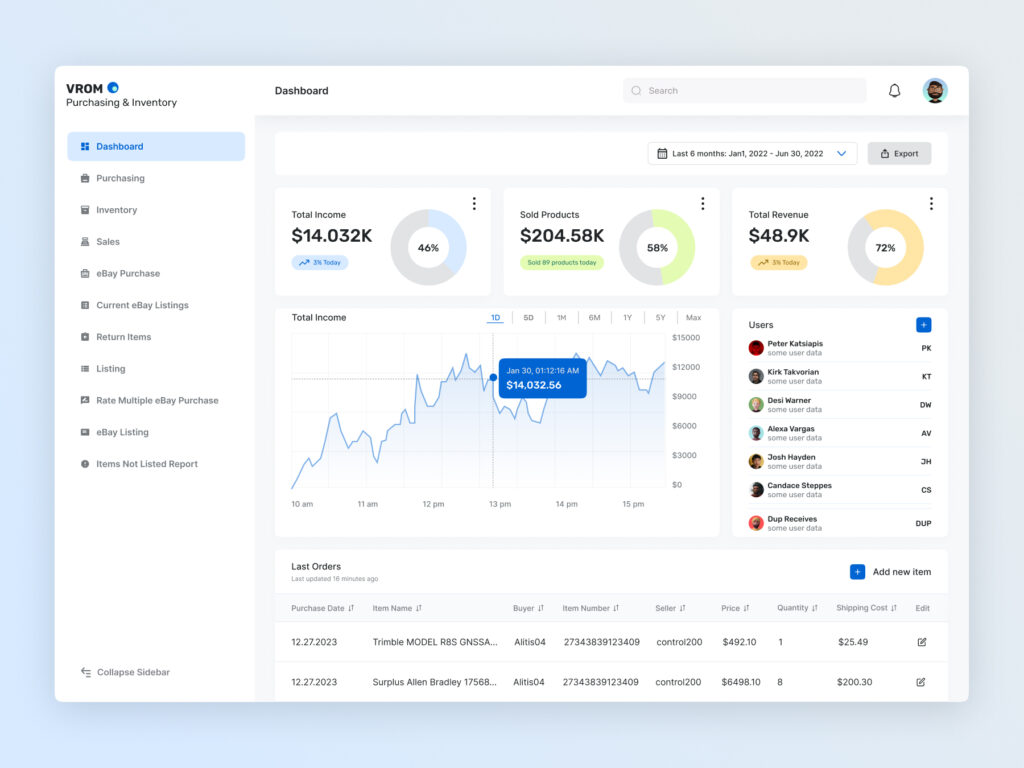
Both case studies illustrate how TATEEDA’s tailored approaches in IT staff augmentation and IT outsourcing can resolve specific client challenges and substantially improve operational efficiencies and technological enhancements.
Finding the Right Partner for Your Needs
To successfully identify a reliable IT staffing partner, follow this straightforward, action-oriented plan:
- Clearly articulate the objectives, requirements, and necessary skills for your project.
- Research potential partners to assess their technical capabilities and review their success in similar projects through case studies or client testimonials.
- Evaluate the cultural alignment and communication practices of the potential partners, considering any time zone differences.
- Perform due diligence on the partners’ financial stability, reputation, and operational integrity.
- Analyze the cost structure of each potential partner to ensure it aligns with your budget and offers good value.
- Following these steps sequentially will help you choose an outsourcing company that matches your technical needs and organizational culture while staying within budget.
Conclusion
We’ve explored the distinctions and advantages of IT staff augmentation and IT outsourcing, highlighting the importance of aligning these services with your specific business needs.
TATEEDA offers both IT outsourcing and staff augmentation, supported by a versatile team that includes .NET engineers, JavaScript coders, and specialists in Node.js and Vue.js. This enables us to provide tailored services that precisely meet your project requirements.
TATEEDA’s Services:
- IT Staff Augmentation: Perfect for projects requiring specific expertise for short periods.
- IT Outsourcing: Ideal for comprehensive project management and sustained development efforts.
If you need detailed guidance or are uncertain about which option best suits your needs, TATEEDA provides expert consultations to help you make the most informed and strategic decision. Engage with our specialists to customize solutions that not only meet but exceed your strategic goals.








